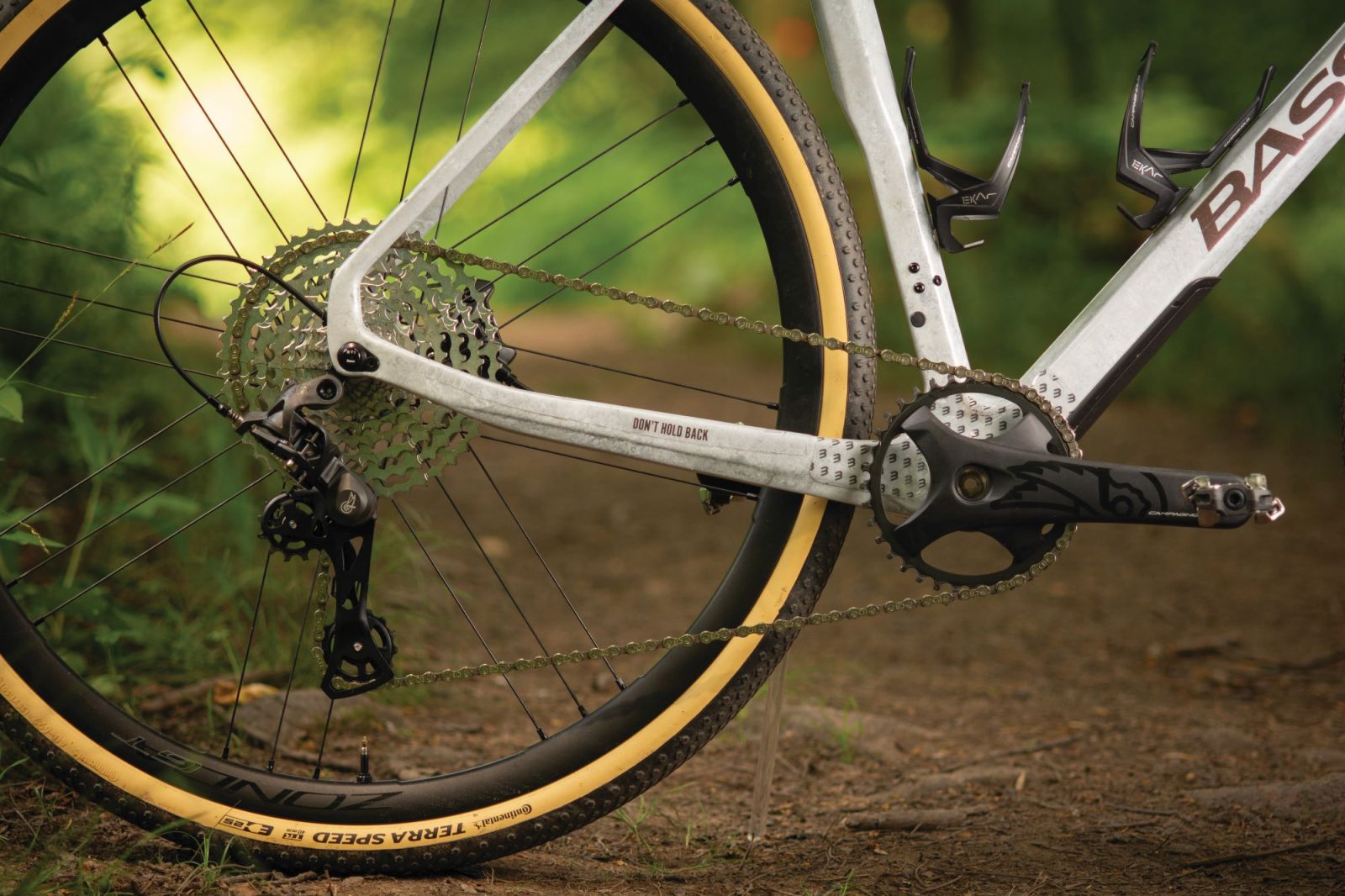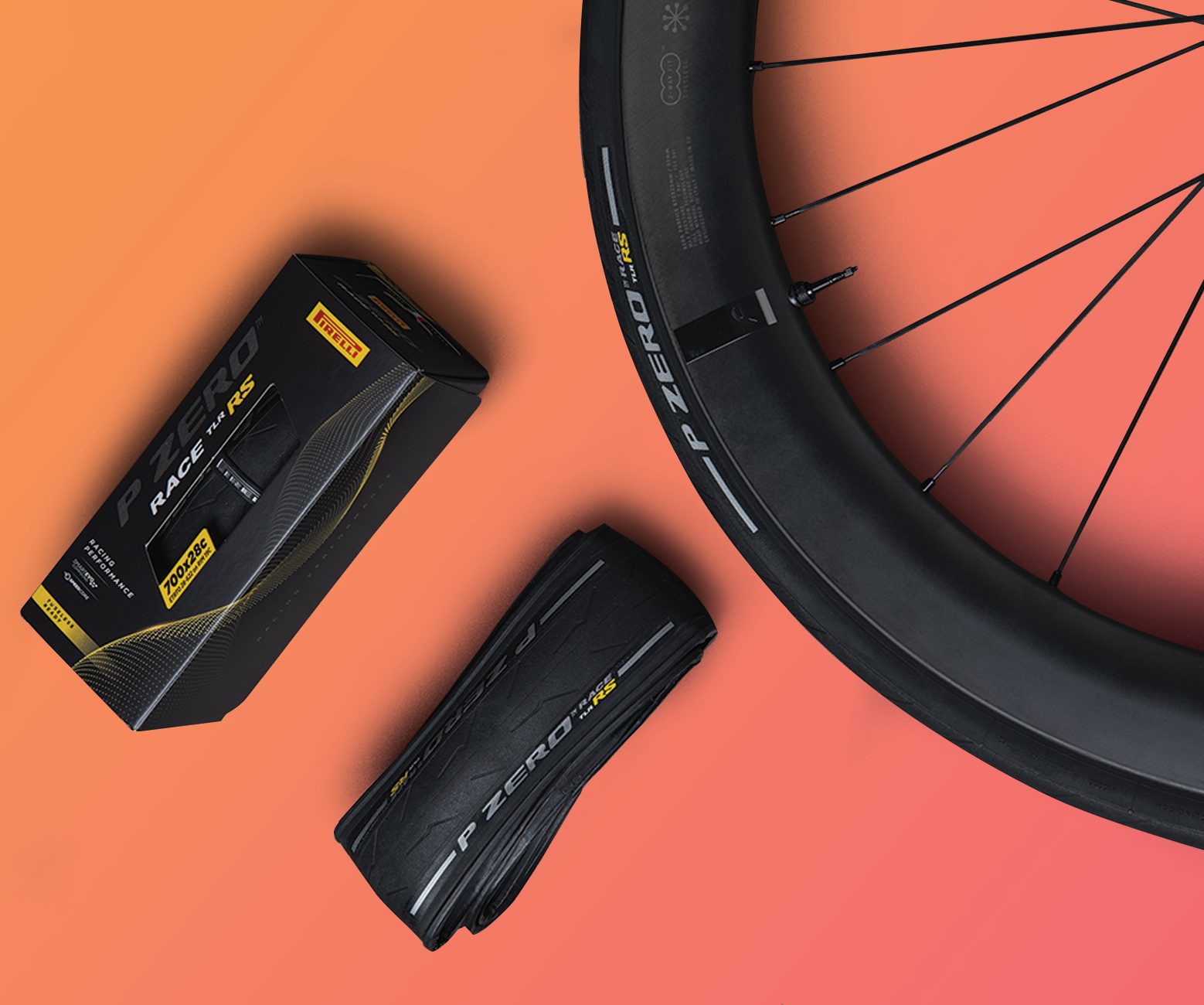‘Total compact road’ geometry changed the game for the modern road bike, and 25 years on the Giant TCR is still at the cutting edge.

Words by Sam Challis
The Giant TCR has been such a successful road bike over the past 25 years that it’s easy to forget just how radical its design was when it first launched, and just how much influence it has had on road bike manufacturing ever since. Take a look at your own bike now – if it has a top tube that slopes down from head tube to seat tube, the original TCR was its ancestor.
Giant’s ‘total compact road’ geometry concept created such advantages in performance and production that it has become the standard way to build a road bike today. Fittingly, given the significance of the innovation, the story behind its conception is remarkable – it involves an eccentric British engineer, a scrap mountain bike frame, a bunch of new rules from the UCI and a dramatic shift in the landscape of global trade…
Radical roots
The career path followed by British engineer Mike Burrows, the TCR’s inventor, unwittingly prepared him to be an innovator in bicycle design. He was always interested in making things, even while he was at school, and learned about aerodynamics in his early career, racing cars and flying model aeroplanes of his own design. He became hooked on cycling after having to use his wife’s bike for a time when his car broke down.
He took to building frames and components, always looking to make them faster, but his designs remained too esoteric to earn him mainstream recognition. Until, that is, he developed a monocoque frame out of carbon fibre composite that his friend’s dad had procured for him.
Thanks to another friend, car maker Lotus picked it up and backed it. The brand provided the capital to fund its refinement and the political clout to strong-arm the UCI into ruling it legal. The outcome was the Lotus 108, which Chris Boardman rode to victory in the individual pursuit at the 1992 Olympics. Burrows was suddenly hot property.
‘We recruited Mike in 1994 and the first bike he made for us was the MCR, or “monocoque compact road”,’ says Nixon Huang, Giant’s global road category manager. It isn’t a million miles from the Lotus 108 in looks, and like that bike it was soon a casualty of the UCI’s restrictive Lugano charter in 1996, which, in seeking to keep cycling about the rider and not the bike, placed significant restrictions on bicycle design.
‘Concepts from it endured, though,’ says Huang. ‘The MCR used fewer frame sizes, adjustable stems and long seatposts. Mike was always complaining that traditional road frames came in too many sizes.
‘The MCR was a solution to that, but when it was banned he took inspiration from the mountain bike world, which had bike frames that were more conventional but only had to be made in three sizes, because their design let different components fine-tune the fit.’

By now international trade was developing, linking Asia more heavily with Western economies. Reportedly, Burrows sat in on meetings where Giant’s Taiwan manufacturing arm was telling the sales arm in Europe that it couldn’t afford the tooling costs because road bikes came in too many sizes.
‘So Burrows put a mountain bike frame together with road forks, a long seatpost and an adjustable stem. All of a sudden frameset fabrication logistics were vastly simplified. There were fewer jigs and less tubing required so, together with the trade links, the mass production and distribution of these compact road bike frames became viable,’ says Huang.
The advantages of Burrows’ TCR design weren’t just practical either, but offered performance benefits as well.
‘The sloping top tube design reduced the frame weight, as it could be made with less material, and the smaller rear triangle increased the stiffness of it too,’ says Huang.
The design’s performance attributes were impressive, and pro validation would be critical for sales, but the UCI initially banned the TCR, displaying a reticence to accept such sweeping changes to road bike design.
‘Giant was able to convince the UCI about its benefits, though,’ says Huang. ‘It was clearly a more cost-effective method of production and it made cycling more accessible. For example, TCRs could fit younger riders for much longer than traditional road frames. The benefits were undeniable, so we were able to successfully appeal against the ban.’
The only way is up
Giant sponsored the formidable Spanish team ONCE in 1999. The team immediately found consistent success aboard the bike, and from there the trajectory of the design’s popularity has only gone one way. Burrows parted company with Giant in 2000 ‘because the UCI was stopping me building better bikes’, and sadly he passed away earlier this year, but Giant has built on his original ingenuity.
One of the earliest major developments to the TCR was the switch from aluminium to carbon fibre in 2002. ‘We produced our first composite frames in 1985, but the biggest hurdle wasn’t their performance – it was making them to a consistent quality,’ says Huang.

Giant had the good fortune of Burrows developing the TCR near the end of a complex process of composite fabrication development the brand had already undertaken.
‘We were building up the foundation of our composite technologies from zero, including composite fibre and resin research, CAE [computer-aided engineering] analysis, lamination and forming technology,’ says Huang. ‘We produced a full-composite mountain bike frame, the MCM, in 1997, but to meet the weight and strength standards we required for the TCR, we spent a further five years improving the monocoque front triangle.’
Since then, updates have been more incremental, yet have kept the TCR relevant. An integrated seatpost was incorporated in 2004 to reduce weight and improve comfort, while a PF86 bottom bracket featured in the 2008 update to improve pedalling stiffness. The 2012 TCR gained Giant’s OverDrive 2 oversized steerer in a bid to improve handling precision. In 2015 the frameset-component system was considered so the TCR performed better as a bike overall, with Giant working hard on in-house componentry that sought to rival specialist brands. It was also one of the first race bikes available with disc brakes in 2016. It is now on its tenth generation.
‘The modern bike’s construction includes processes such as the cold cutting of carbon composite material swatches and the automation of certain parts of the layup process,’ says Huang. ‘This increases precision and reduces redundant material. That sheds weight while maintaining stiffness, as well as incorporating design cues to aid aerodynamic efficiency.’
In so many instances, Giant’s TCR has been the first to incorporate new features that go on to be seen as a step forward for bike design. The original TCR changed the game, and each successor has found a way to stay ahead of it.
TCR timeline

1997: The first production TCR makes its debut. It is available in three frame sizes – S, M, L – and has an angle-adjustable quill stem available in three lengths.

1998: Spanish team ONCE debuts the TCR at the Tour de France. Giant produces a complete Team ONCE replica, using a Campagnolo Record groupset.

2000: Giant updates the TCR’s front end to a more contemporary one-inch threadless headset.

2002: Full-composite TCR makes its debut at the Tour. ONCE-Eroski win the team classification and Joseba Beloki finishes second behind Lance Armstrong.

2004: Third-generation TCR, now with an integrated seatpost, debuts at the Tour with T-Mobile, who win the team classification three years running.

2005: First TCR with an integrated seatpost is commercially available in five sizes. The feature has remained on the top-tier frameset ever since.

2008: Fifth-generation Advanced SL has a number of new features, including a press-fit bottom bracket. Mark Cavendish wins four Tour stages on it.

2009: Rabobank rider Denis Menchov wins the Giro d’Italia on a TCR Advanced SL.

2012: Sixth-generation TCR debuts at the Tour with Rabobank. It features Giant’s OverDrive 2 oversize steerer in a bid to improve handling.

2015: Seventh-generation TCR debuts at the Tour with Giant-Alpecin. Simon Geschke wins Stage 17 on it.

2016: Eighth-generation TCR, the first with disc brakes, launches.

2017: Team Sunweb’s Tom Dumoulin wins the Giro d’Italia aboard a TCR, and Sunweb also win both the points and mountains classification at the Tour.

2019: Prototype testing of the ninth-generation TCR Advanced SL begins with CCC Team in races such as the 2019 World Championships Road Race.

2020: Ninth-generation TCR launches. Tech such as laser cutting and robotic layup assembly improve stiffness-to-weight despite the addition of aerodynamic cues.
 2024: Tenth-gen TCR is released, with new construction methods and a new frame design improving aerodynamics, reducing weight and increasing stiffness.
2024: Tenth-gen TCR is released, with new construction methods and a new frame design improving aerodynamics, reducing weight and increasing stiffness.


